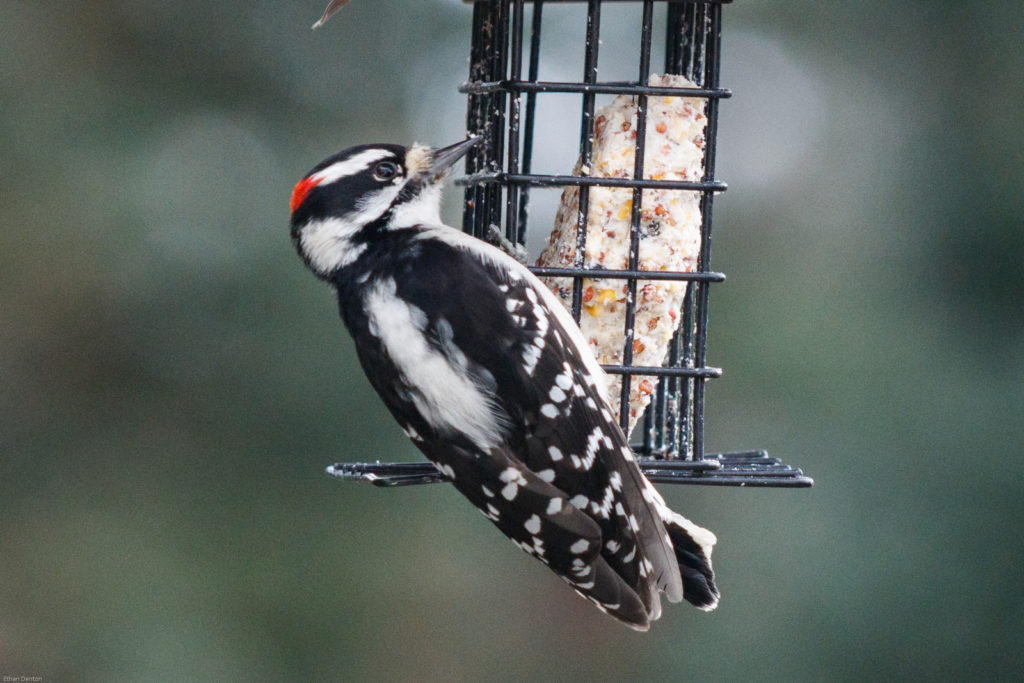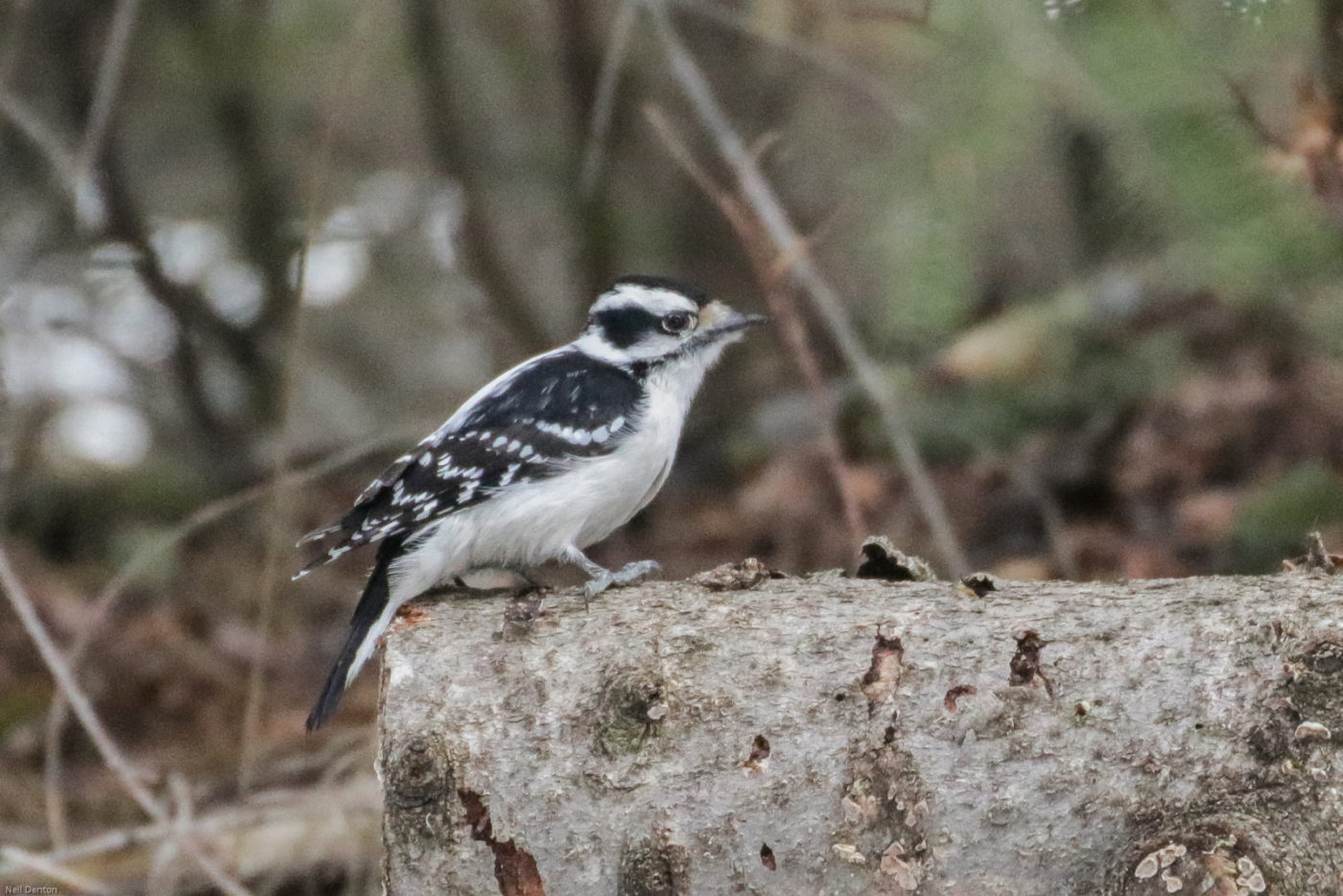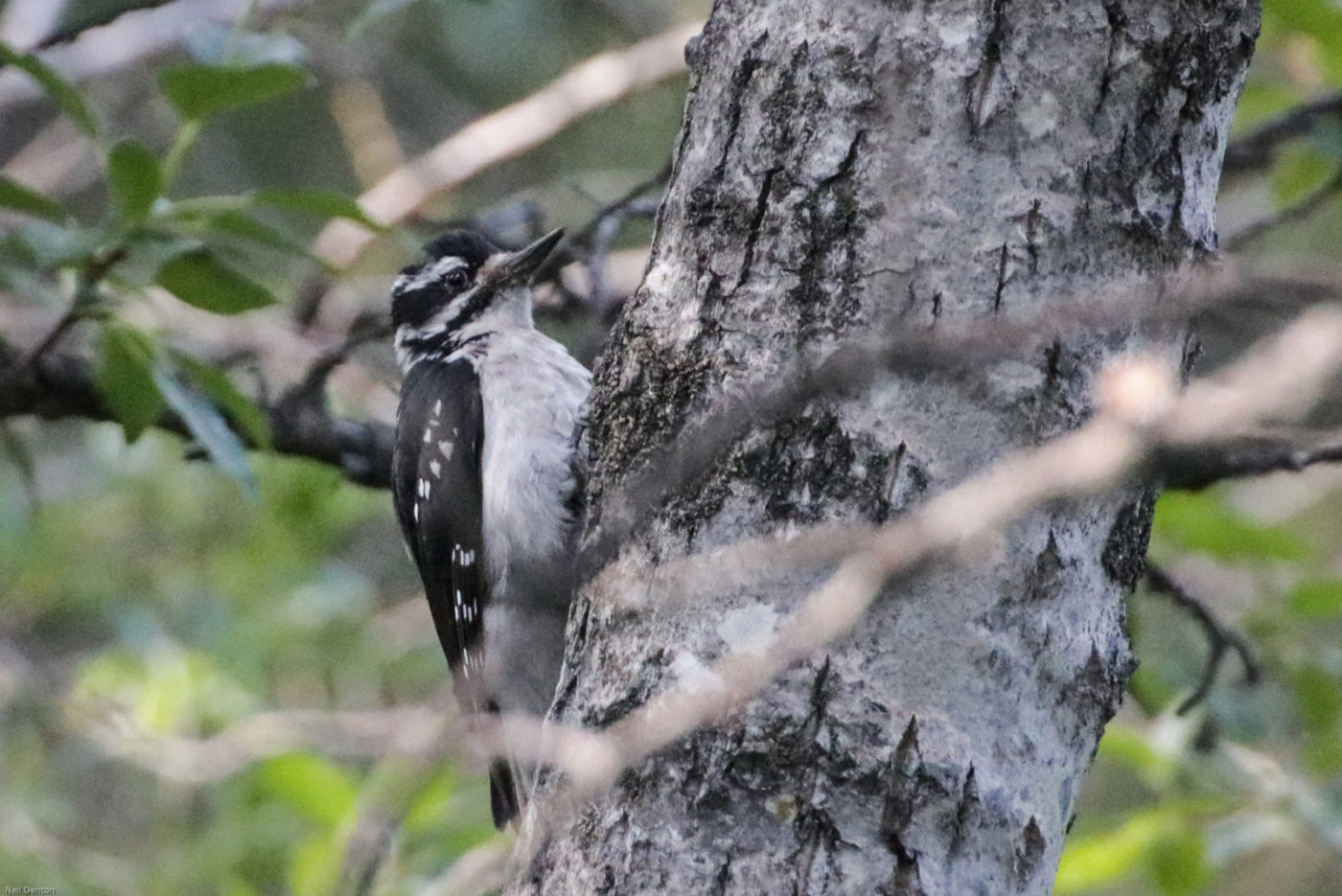A flash of white streaks by and alights on a nearby stump. You spin, and place your binoculars on a small white and black woodpecker. It’s either Hairy or Downy, but do you know which? This question is a common one for beginning and novice birders across the continent, as these friendly little chaps will come to almost any feeder – suet, sunflower, peanut – for at least a short visit.
Identification can be a challenge, especially when you don’t know much about the two. Hairy is bigger than Downy, but in the field, this can be difficult to judge accurately, so how do you do it?
In the two above photos, (click to enlarge) you can see the key mark between them – the bills. On the Downy Woodpecker, the bill is a short projection of about one third the length of the head, where the Hairy has a big, thick bill, almost entirely the length of its head. Another interesting feature is the black shoulder mark on the Hairy – if you look closely, most Hairy Woodpeckers have a comma shaped black mark protruding from the back over the shoulder and sometimes on to the breast. Downys almost never have such a mark, but occasionally they can show something similar, so keep an eye out!

One final useful tool is the call. As the name suggests, Downy Woodpecker’s rapid fire “dododododododo” slips DOWN the scale towards the end, decrescendo style, while a Hairy’s call stays level or even goes up at the end.
So next time you’re out, take a long look at the local woodpeckers, and try to identify them. Take photos if you can – a snapshot never flies away! – before watching it. Downys especially can be quite tame, and may even land on your hand if you train them. Why not try it? Take your kids out, enjoy nature and provide a cool experience that may start them off on their birding career.


Great article. We have a Downy that comes regularly for suet but I always identified him by size. Now I will pay attention to the other features you mentioned.